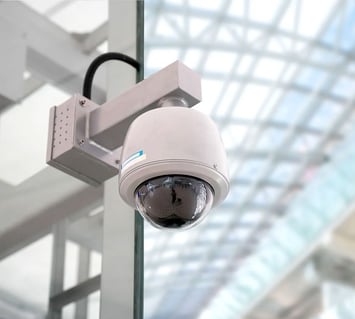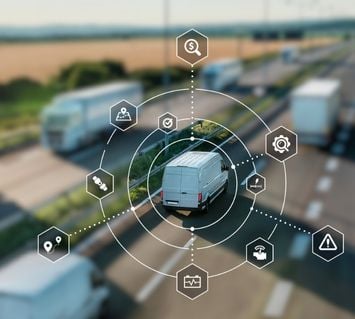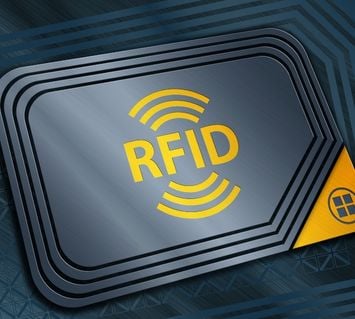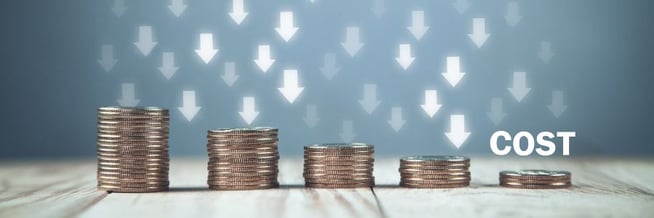By Jay Palter | October 18, 2023
Perspective is everything in today's business world. Business leaders and professionals across industries understand that simple decisions can have far-reaching consequences without proper perspective. That is why getting valuable data from across your operations is so important: good data provides that necessary perspective.
Physical asset surveillance systems are one of the newest business intelligence-gathering tools on the market. They are the glue connecting your asset tracking hardware and software business systems. But like any tool, the usefulness of physical asset surveillance systems depends on a business's needs. So, let's explore physical asset surveillance, what it does, and where it is most useful.
What is asset surveillance?
Asset surveillance systems monitor the location and status of tracked assets. The specific technology used can vary by industry and use case, but an organization deploying any asset surveillance system aims to understand who is accessing a given asset, how and when they’re using it, and the condition of that asset before, during, and after use.
Physical asset surveillance systems are typically deployed to track high-value assets or assets that are essential to critical workflows. For many organizations, if essential equipment isn’t in the right place, in working condition, or at the right time, the consequences can be severe—financially, reputationally, or for the safety of their employees or the public.
What types of physical assets do organizations want surveillance for?
Organizations care about securing a broad range of different physical assets, but some of the most commonly tracked include vehicles, equipment and toolkits, parts inventories, and mobile devices and the sensitive data they hold.
Vehicles
An individual vehicle is costly to maintain and essential to a business’s work. Managing an entire fleet significantly multiplies those challenges, so many organizations turn to asset tracking or surveillance systems to better manage drivers, vehicles, and maintenance schedules. GPS tracking, telematics systems, vehicle key tracking, and onboard diagnostics can all be implemented individually or together for fleet management. This surveillance can enable efficient route planning, fuel optimization, and timely maintenance, reducing operating costs and extending vehicle life cycles.
Equipment and toolkits
All kinds of worksites and facilities rely on staff having easy access to different equipment and toolkits to carry out their work. Asset surveillance systems for these items typically occur inside smart storage lockers that help verify who accesses which items and ensure that toolkits are properly stocked before and after use. Radiofrequency identification (RFID) tags or Internet of Things (IoT) sensors embedded within locker compartments track individual items or entire kits in real time.
Parts inventory
Inventory requires careful tracking and surveillance, including everything from raw materials to parts to finished products. Barcodes or RFID tagging managed by automated asset tracking software help organizations monitor stock levels, detect discrepancies, and loss prevention for internal and external theft. Real-time tracking updates also help ensure inventory accuracy and streamline supply chain operations.
Mobile devices and their data
Like other equipment, mobile devices obviously need reliable tracking for their use in critical workflows because their replacement cost can be quite high. But you need to track mobile devices for another very important reason: they often hold, or connect to, proprietary data far more valuable than the devices themselves. So, organizations must track these devices at rest and during use. In addition to barcode and RFID technology, many advanced smart locker systems include USB connections for charging idle devices and collecting device and data status information.
Why is physical asset surveillance so important?
Physical asset surveillance is about more than just security. Protecting your physical assets is important, but asset surveillance systems are most valuable for improving operations. Teams across industries now seek to understand what assets they possess, how these assets are utilized, and by whom.
Data-driven insights
Asset surveillance transforms regular physical assets into valuable data sources—not just on their condition but potentially on their surrounding workflows. The information gathered can be leveraged to gain insights into asset utilization patterns, user behaviors, and potential areas for improvement.
Customized workflows
With asset surveillance systems in place, organizations can craft new workflows based on enhanced asset availability or new system capabilities, such as asset reservations for important jobs. For instance, when rugged laptops are deployed for critical repairs in the field, your smart locker asset management systems can lock down laptops so they’re only available to assigned technicians during set windows. Further, when a staff member requests a laptop, the system can identify the most-charged unit.
Operational efficiency
By monitoring physical assets' status, location, and condition in real time, organizations can streamline processes, reduce downtime, and make more informed decisions. This heightened visibility enhances overall operational efficiency and reduces costs associated with asset mismanagement.
For example, an emergency medical services agency can track medical kits signed out by EMTs at the start of their shift. Individual kit components, including medication vials, are tagged. Suppose an EMT returns a kit missing a component or reports low consumables through the asset management system’s interface. In that case, the system locks that kit out of circulation so another tech doesn’t accidentally take it on their shift and compromise patient care.
Improved compliance efforts
Most businesses have one or more sets of regulatory requirements or quality standards under which they must operate. Asset surveillance provides a robust means to ensure compliance by documenting asset usage, maintenance, and access histories. This not only aids in meeting legal obligations but also fosters accountability within the organization.
Enhanced security
At its core, asset surveillance is about safeguarding valuable resources. Organizations can detect and prevent unauthorized access, theft, or misuse by actively monitoring the whereabouts and usage of assets.
How does physical asset surveillance work?
Physical asset surveillance systems can employ various technologies and methodologies. These can be used separately or, more commonly, together in organized management systems.
Security cameras
Security cameras are the most visible and recognizable forms of physical asset surveillance. Strategically placed, they cover areas where assets are stored, moved, or accessed and provide a visual record of these activities. Modern security cameras often feature high-definition video quality, night vision capabilities, and facial recognition technology for enhanced asset monitoring.

GPS tracking
GPS tracking is pivotal in managing moving assets like vehicles and high-value equipment. GPS devices installed on assets transmit real-time location data that can be monitored remotely, allowing organizations to track the movement and location of assets. This is especially valuable for fleet management and logistics operations.

RFID technology
RFID tags are affixed to assets, and RFID readers and antennas are strategically positioned at key points. The RFID system automatically registers their presence when assets are near these readers. This enables real-time tracking, asset identification, and inventory management.
Learn More: The Power of RFID Across Industries

Data analytics and AI
Modern physical asset surveillance goes beyond passive monitoring. It incorporates data analytics and artificial intelligence (AI) to derive actionable insights not available through manual or routine digital means. AI-powered algorithms can analyze video feeds, access logs, or tag tracking data to identify suspicious activities and generate real-time alerts. Additionally, data analytics can provide valuable information on asset utilization, maintenance needs, and trends, helping organizations make informed decisions.

Key challenges of physical asset surveillance
While physical asset surveillance offers significant benefits, if not managed correctly, it could also present a few challenges that organizations must address to ensure its effectiveness and compliance with regulations.
Privacy concerns
 Balancing the need for asset security with individuals' privacy rights can be a significant challenge. Security cameras and sensors may capture footage or data that includes employees or visitors, raising privacy concerns. Organizations must implement clear policies and practices for handling and storing sensitive data while adhering to relevant privacy laws.
Balancing the need for asset security with individuals' privacy rights can be a significant challenge. Security cameras and sensors may capture footage or data that includes employees or visitors, raising privacy concerns. Organizations must implement clear policies and practices for handling and storing sensitive data while adhering to relevant privacy laws.
Cost
 Implementing a robust physical asset surveillance system can be costly. Expenses include purchasing cameras, sensors, RFID technology, data storage, and ongoing maintenance. Teams on tight budgets may find it challenging to justify the upfront investment, although the long-term benefits typically represent a significant return on investment.
Implementing a robust physical asset surveillance system can be costly. Expenses include purchasing cameras, sensors, RFID technology, data storage, and ongoing maintenance. Teams on tight budgets may find it challenging to justify the upfront investment, although the long-term benefits typically represent a significant return on investment.
Resource: Smart Locker ROI Calculator - See how much your organization could be saving by using smart lockers.
Data management
 The vast amount of data generated by physical asset surveillance systems can overwhelm an organization without effective data management strategies. Storing, organizing, and analyzing the data meaningfully can be complex. Data management protocols and tools are crucial for maximizing the collected information.
The vast amount of data generated by physical asset surveillance systems can overwhelm an organization without effective data management strategies. Storing, organizing, and analyzing the data meaningfully can be complex. Data management protocols and tools are crucial for maximizing the collected information.
The human factor
 In business, we can always appreciate the importance of the human factor. Employees may forget to wear RFID badges, ignore safety protocols, or circumvent security measures. Training and awareness programs are essential to mitigate these human-related challenges.
In business, we can always appreciate the importance of the human factor. Employees may forget to wear RFID badges, ignore safety protocols, or circumvent security measures. Training and awareness programs are essential to mitigate these human-related challenges.
Best practices in physical asset surveillance
Motivated organizations in all industries and of all sizes should follow best practices that help them make the most of their surveillance systems while addressing potential challenges. Here are five key best practices anyone such an organization should follow.
First things first: conduct a risk assessment
Begin with a thorough risk assessment to identify the most critical and vulnerable assets. Understand the potential threats, whether from theft, damage, or misuse. This assessment will help prioritize surveillance efforts and allocate resources more effectively.
Implement access controls
Implement stringent access control measures to limit who can access assets and surveillance data. Use biometric authentication, RFID badges, or key cards to ensure only authorized personnel can access secured areas. Regularly review and update access permissions as needed.
Perform regular audits
Conduct regular audits of your physical asset surveillance system. Ensure that cameras, sensors, and other devices are functioning correctly. Regular maintenance and software updates are essential to keep the system in optimal condition.
Conduct regular employee training sessions
Train employees on the proper use of assets and the importance of security protocols. They should know how surveillance systems work and how their actions impact asset security. Provide guidelines for reporting suspicious activities.
Integrate with other business and security systems
Integrate your physical asset surveillance system with other security and management systems, such as access control, alarm systems, and inventory management. Integration allows for more comprehensive asset protection and streamlined operations.
Schedule a live demo and see what an asset surveillance system can do for your business.
Subscribe to our blog

Jay Palter
Vice President of Marketing & Partnerships





